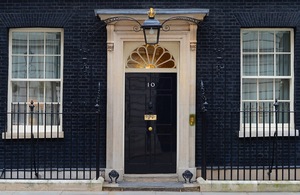Secret war rooms
Find out what is was like to spend time underground.

Life in the Secret War Rooms
Life in the secret basement was not easy. Staff would have to carry their gas masks around with them wherever they went.
There were no flushing toilets and people would sleep in tiered bunks with in crowded dormitories, covered in army blankets. All but the most senior staff slept in the sub basement, known as the “Dock”.
There were many draw-backs about sleeping in these underground rooms. Insects, rats and the noise of the ventilation system, made sleeping very uncomfortable.
In the Dock, anyone taller than four feet needed to stoop to get to their bedroom chambers. It was also extremely dark on this level so people needed to carry torches in order to see where they were going. It is not surprising that many staff would dare the long journey home at night just to sleep in comfort.
The Central War Rooms had a “mess” where members of senior staff from Number 10 and the War Cabinet Office would drink together. Churchill never had a meal here, but used the reinforced Garden rooms or the Annex for dining.
John Colville (Churchill’s private secretary) recalled:
He had his meals in Number 10, bombs or no bombs, and went over to the Cabinet War Rooms in the evenings.
The Secret Rooms
The Cabinet Room
The War Cabinet met no less than 115 times in this underground room during bombing raids. It was in this room that many crucial decisions were made.
The Map Room
From the day that the Cabinet War Rooms were ready for use, the Map Room was used and remained the centre point of the underground site until Victory in Japan day.
On the walls were large maps of the Atlantic, the Far East, and the seas around the United Kingdom. It was in this room that the direction and progress of the war was charted.
Churchill’s Bedroom
Churchill did not like his bedroom in the Central War Rooms, however, he used it occasionally for an afternoon rest. It was from here that he dictated a memorial speech on the death of Neville Chamberlain.
The Central War Rooms were used extensively from September 1940 to May 1941, during the Blitz. As soon as the bombing stopped Number 10 again became the main place where the Cabinet and Churchill conducted affairs.
Transatlantic Telephone Room
A scrambler codenamed ‘Sigsaly’ was connected to this room which created the hot-line enabling Churchill and the President of the United States to have vital discussions with total security. This old basement broom cupboard was converted in 1943.
The London terminal of the telephone scrambler, codenamed ‘X-Ray’, was so large it had to be located in the basement of Selfridges department store in Oxford Street.
Conversations were transmitted by cable from the hot-line to the Selfridges site where they were enciphered and sent by cable to Scotland and from there by radio waves to the President in Washington.